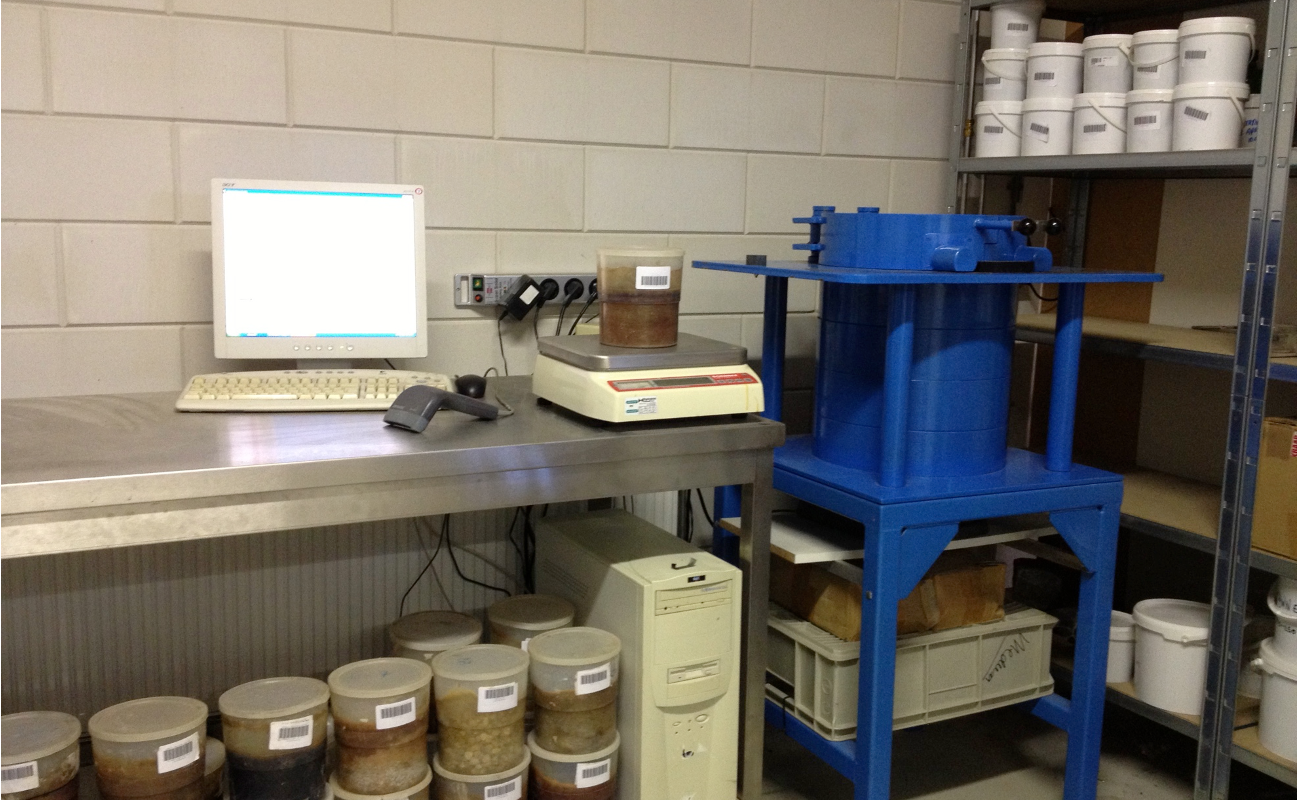Analysis of samples
The gamma-ray spectrometers of Medusa are calibrated such that they produce activities in Bq/kg dry matter (or in ppm dry matter, these values can easily be converted). This gives the opportunity to use lab measurements to set-up an application model, (e.g. to correlate the radionuclide concentrations to clay or other soil properties) to translate the field values into a map of the soil property under investigation.

The laboratory set-up for measuring radionuclide concentrations on samples.
The concentrations of 238U, 40K, 232Th and 137Cs from the samples is measured on a 3x3 inch NaI gamma spectrometer placed in a laboratory setup. In this setup, the gamma-ray spectrometer is placed in a lead shielding (the blue drum in the figure) to reduce the amount background radiation coming from the surrounding environment. The samples are measured in re-entrant (type 233N) Marinelli beakers. The Marinelli beakers are polypropylene containers with a wall thickness of 2 mm. The shape of the sample in the Marinelli beaker can be visualized as a hollowed cylinder covering the sides and the top of the detector which fits inside the hollow cavity of the Marinelli beaker. The volume of such a sample is 1000 cm3. These Marinelli beakers are made such that the maximum path length from the sample to the detector is just a few cm. This implies all radiation seen by the detector is virtually unaffected by compaction or moisture variations in the sample.
In the measurement procedure, a sample is placed in a Marinelli beaker and the sample weight is measured. After measuring the gamma radiation, part of the sample is used to determine the dry weight percentage by drying the sample in an oven at 105 deg C and measuring the sample weight before and after drying. These procedures for 238U, 232Th and 40K are conform the methods described in the Dutch norm for determination of the natural radioactivity in stony building materials (NEN 5697, 2001) and the procedure for 137Cs is conform with the methods used for the validation of the Dutch norm for the determination of the activity of gamma ray emitting nuclides in a counting sample (NEN 5623, 2002).
The samples can be delivered right from the field sampling. The effect of compacting during transport or the loss of moisture does not influence the results, since results are in Bq/kg dry matter. The field systems are also calibrated such that they produce activities in Bq/kg dry matter. The lab values can therefore be used to correlate to clay or other soil properties. This correlation (“fingerprint”) can then be used to translate the field values into a map of the soil property under investigation.
The Marinelli beakers come in different sizes, but a common size can contain 1 liter of material. The samples should therefore have a volume of at least 1 liter. In addition to 1 liter samples, the lab set-up is also calibrated to process 305 ml samples. This will however negatively affect processing time and accuracy. Providing 1 liter samples is therefore recommended.
